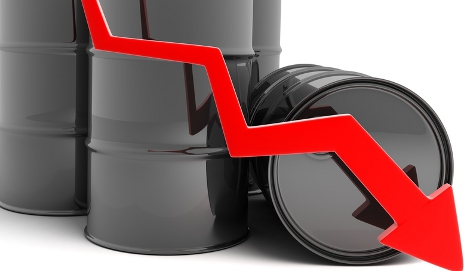Recent disruptions in Nigeria’s oil production has been a major factor behind the latest rally in crude oil prices, but changes in the domestic political climate and a recent influx of new investment looks to change that, with possible ramifications on the crude price for later this year.
Since March, Nigeria has struggled with an insurgency in the Niger Delta region, where the bulk of its oil and natural gas industry is located. Violence in the Niger River Delta escalated when the Nigerian government, under tremendous financial pressure due to the collapse in oil prices since 2014, cut subsidies to militia groups and ended its traditional protection of oil facilities. The violence reflects both the worsening economic conditions and historic grievances of groups living in the Niger Delta region.
The Niger Delta Avengers, a militant group that emerged officially in March 2016, has been attacking oil refineries and pipelines in an attempt to pressure the government into a settlement. The group’s exact motives, origins and long-term plans are shrouded in mystery, though they have called for a partition of Nigeria and the creation of a sovereign state in the Niger River Delta. Their attacks on Nigeria’s oil industry have been so effective that the country’s output has fallen to its lowest level in twenty years. Angola briefly surpassed Nigeria as the largest producer in Sub-Saharan Africa.
The result of this violence was a tremendous drop in Nigeria’s oil production from 2.2 million bpd to 1.3 million bpd and there were fears that the country’s output would never recover. This has been a crucial factor in the recent rally in oil prices, with falling Nigerian output combined with wildfires in Canada erasing an oil glut which had persisted since 2015.
Now the situation has been reversed. A potential ceasefire agreement between the Nigerian government and the Niger Delta Avengers has emerged, which could reduce the level of violence and allow oil production to recover. The Nigerian government has already announced an increase to 1.9 million bpd from 1.3 million earlier in the week. The increase came just as new investments worth $8.5 billion were secured from China North Industries Group Corp. Some experts have disputed that claim, arguing that it is inflating the level of Nigerian recovery and is primarily a political statement meant to draw attention away from the debacle in the Delta.
The Nigerian oil industry desperately needs this new investment, as structural weaknesses and crumbling infrastructure takes its toll, together with the damage done by militants. Maintaining a new level of production would require $40-50 billion. Now that money has materialized: Thursday morning Nigeria announced that memorandums of understanding (MOUs) had been signed with Chinese firms totaling $80 billion.
Brent crude, which rose 3.3 percent on Wednesday on bullish news from the EIA regarding falling U.S. inventories, now looks set to fall below $50 again. Goldman Sachs Inc. has announced that hopes for a benchmark above $50 by the end of the year is doubtful if Nigeria succeeds in recovering its output, which now looks likely.
Then again, immediate concerns over the economic impact of Brexit and a possible oil workers’ strike in Norway could offset the recovery in Nigeria. OPEC members need a projected 650,000 bpd in order to avoid a production deficit, and with things looking grim in Venezuela and production still faltering in Libya, it’s unclear where this new output will come from. Venezuela, in the grips of mass unrest, food shortages and economic turmoil, could see its production fall by as much as 500,000 bpd by the end of the year. Debts carried by PDVSA could force the company into default.
With prices hovering around $50 for the last month, momentary disruptions from political and environmental factors have prevented a stronger recovery. Together with the EIA estimates of U.S. inventories and the relatively bullish predictions coming from market watchers, it’s possible that Goldman’s bearish stance could prove inaccurate. Nigerian production may not offset the more significant decline in Venezuela, and the Nigerian recovery may not be as robust as their government hopes. There are also looming signs that the major shortfall in exploration and investment that has come with the fall in prices will presage a significant shortage in the years to come, raising prices to as high as $80 by 2017. But for now, there is a decent chance that the crude rally could reverse in the short run.
By. Gregory Brew

